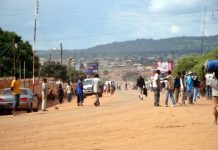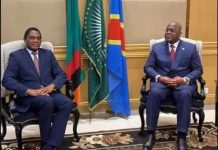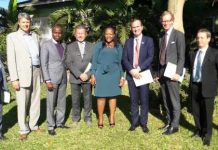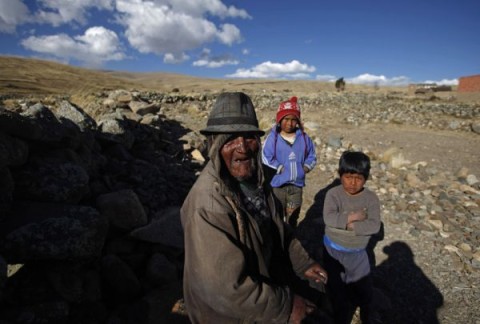
If Bolivia’s public records are correct, Carmelo Flores Laura is the oldest living person ever documented.
They say he turned 123 a month ago.
The native Aymara lives in a straw-roofed dirt-floor hut in an isolated hamlet near Lake Titicaca at 13,100 feet (4,000 meters), is illiterate, speaks no Spanish and has no teeth.
He walks without a cane and doesn’t wear glasses. And though he speaks the Aymara language with a firm voice, one must speak directly into his ear to be heard.
“I see a bit dimly. I had good vision before. But I saw you coming,” he tells a group of journalists who visited after a local TV report about him.
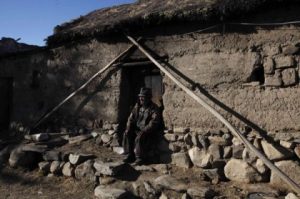
They say he turned 123 a month ago.
Hobbling down a dirt path, Flores greets them with a raised arm, smiles and sits down on a rock to chat. His gums bulge with coca leaf, a mild stimulant that staves off hunger that, like most Bolivian highlands peasants, he has been chewing all his life.
Guinness World Records says the oldest living person verified by original proof of birth is Misao Okawa, a 115-year-old Japanese woman, while the oldest verified age on record was 122 years and 164 days: Jeanne Calment of France. She died in 1997.
Flores’ 27-year-old grandson Edwin said he was unfamiliar with the Guinness organization and the group’s spokeman Jamie Panas said it wasn’t aware of any claim being filed with it regarding Flores.
“I should be about 100 years old or more,” Flores says.
The director of Bolivia’s civil registrar, Eugenio Condori, showed The Associated Press the registry that lists Carmelo Flores’ birthdate as July 16, 1890.
Condori said there is no birth certificate because they did not exist in Bolivia until 1940. Births previously were registered with baptism certificates from the nearest Roman Catholic church, authenticated by two witnesses.
“For the state, the baptism certificate is valid because in those days priests provided them and they were literate,” Condori said. He said he could not show Flores’ baptism certificate to the AP because it is a private document.
The grandson says the family showed the baptism certificate to the government so Flores could qualify for a monthly subsidy for the elderly.
To what does Flores owe his longevity?
“I walk a lot, that’s all. I go out with the animals,” says Flores, who long herded cattle and sheep. “I don’t eat noodles or rice, only barley. I used to grow potatoes, beans, oca (an Andean tuber).”
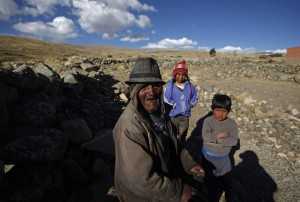
They say he turned 123 a month ago.
The native Aymara lives in a straw-roofed dirt-floor hut in an isolated hamlet near Lake Titicaca at 13,100 feet (4,000 meters), is illiterate, speaks no Spanish and has no teeth
Carmelo Flores Laura, a native Aymara, walks with his hands behind his back in the village of Frasqu …
The water Flores drinks streams down from the snow-capped peak of Illampu, one of Bolivia’s highest mountains.
He says he doesn’t drink alcohol, but imbibed some in his youth. He’s eaten a lot of mutton, and though he likes pork it is hardly available. He fondly remembers hunting and eating fox as a younger man.
He says he has never been farther afield than La Paz, 80 kilometers away, and has never been seriously ill.
And he sorely misses his wife, who died more than a decade ago.
Of their three children only one is still alive: Cecilio, age 67. There are 40 grandchildren and 19 great-grandchildren but most have left Frasquia, a dozen homes located a two-hour walk from the nearest road in Warisata.
Edwin Flores, who lives next door with his wife and their two children, says his grandfather worked for the rancher who owned Frasquia until 1952, when the state seized major holdings in an agrarian reform and parceled them out to peasants working the land.
Although electrical power arrived in Frasquia three years ago, time seems to have stood still. Peasants still prepare chuno, or dehydrated and chilled potatoes, and till the soil with ox-driven plows.
___
Associated Press Writer Frank Bajak contributed from Lima, Peru.

 JOIN DRIVERN TAXI AS PARTNER DRIVER TODAY!
JOIN DRIVERN TAXI AS PARTNER DRIVER TODAY!